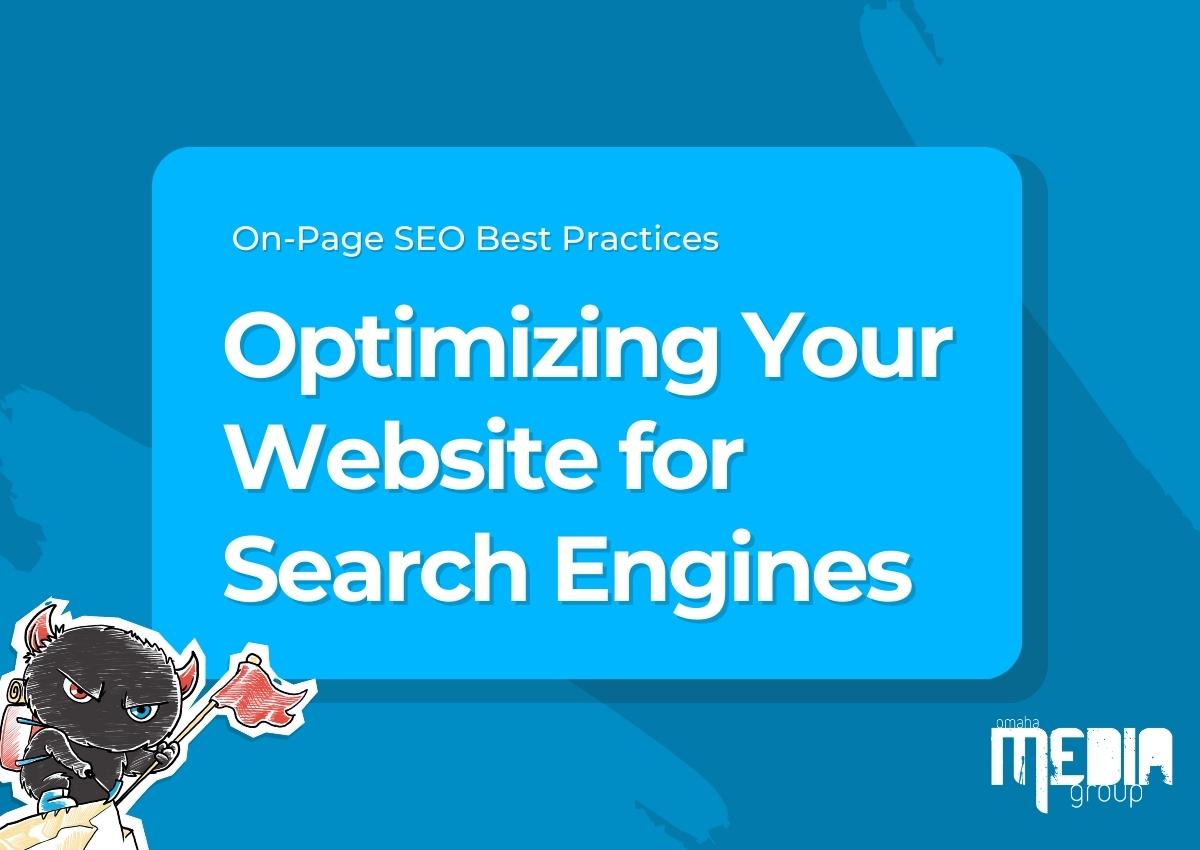Optimize Your Website: On-Page SEO Best Practices
 https://www.omahamediagroup.com/images/uploads/monster_gallery/Omaha-Media-Group-Black.jpg
https://www.omahamediagroup.com/images/uploads/monster_gallery/Omaha-Media-Group-Black.jpg

Search engine optimization (SEO) is the digital marketing process of increasing your website’s visibility on search engines. This means that whenever someone searches for your product or service, your website will show up on those searches.
You can implement this digital marketing strategy yourself or by getting Omaha SEO services. In order to have a successful SEO strategy, you need to be using on-page SEO. This kind of on-page SEO involves optimizing various elements of your web pages to improve their visibility on search engine results pages (SERPs).
Our Omaha SEO services team is here to break down the essential on-page SEO best practices that will help you optimize your website for search engines and drive organic traffic.
The best on-page SEO practices
Conduct comprehensive keyword research
The first step to starting your on-page SEO strategy is to do some keyword research. This process is about identifying the keywords or phrases that your target audience is searching for to find your product or service. You can do this process yourself or by hiring Omaha SEO services. A good rule of thumb is finding high-volume, low-competition keywords.
Craft engaging and relevant content
You want to create a blog for your website and write content that your target audience finds useful. Google considers this high-value content, and it will increase your website’s ranking. As you are writing this kind of content, you want to make sure that it contains relevant keywords.
Optimize title tags and meta descriptions
Two important aspects of a web page for SEO are title tags and meta descriptions. A meta description provides a brief overview of the content and encourages users to click through, while a title tag is a piece of HTML code that indicates the title of a webpage. When writing content, you want to use compelling and concise title tags that include the primary keyword for the page. Make sure to keep both title tags and meta descriptions under their recommended character limits to ensure they are fully displayed in search results.
Use header tags to organize content
To get your content optimized, you should also be using header tags (H1, H2, H3, etc.). These tags help keep your content organized and make it more readable for both users and search engines. Use the H1 tag for the main title of the page and incorporate relevant keywords into your subheadings (H2, H3, etc.).
Optimize images for SEO
Aside from optimizing the content, you also want to optimize the images. You want to make sure the name of the images you are uploading has a descriptive title. That way, when people are searching for the product or service, your image shows up in the search results. It makes your images accessible to search engines and improves overall page optimization.
Create SEO-friendly URLs
URLs are also an important part of any SEO strategy. These should be short, descriptive and contain target keywords. Avoid using special characters, numbers or unnecessary words in your URLs. A clear and concise URL structure makes it easier for search engines to understand the content of your page.
Internal linking
Internal linking is a powerful on-page SEO technique that not only enhances user navigation but also helps search engines understand the structure of your website. Link to relevant internal pages using descriptive anchor text, which gives context to both users and search engines.
Regularly update and refresh content
SEO is an ongoing process. What that means is that you should be continuously updating your content to ensure it is accurate. Also, you want to be producing unique and updated content. Make sure to also include keywords in your content.
Improve your SEO strategies with the best Omaha SEO services!
By implementing these on-page SEO best practices, you're setting the stage for improved search engine visibility, higher organic rankings and ultimately, increased traffic to your website. Reach out today to learn more about our SEO services.
Posted In: SEO and Search Marketing


























